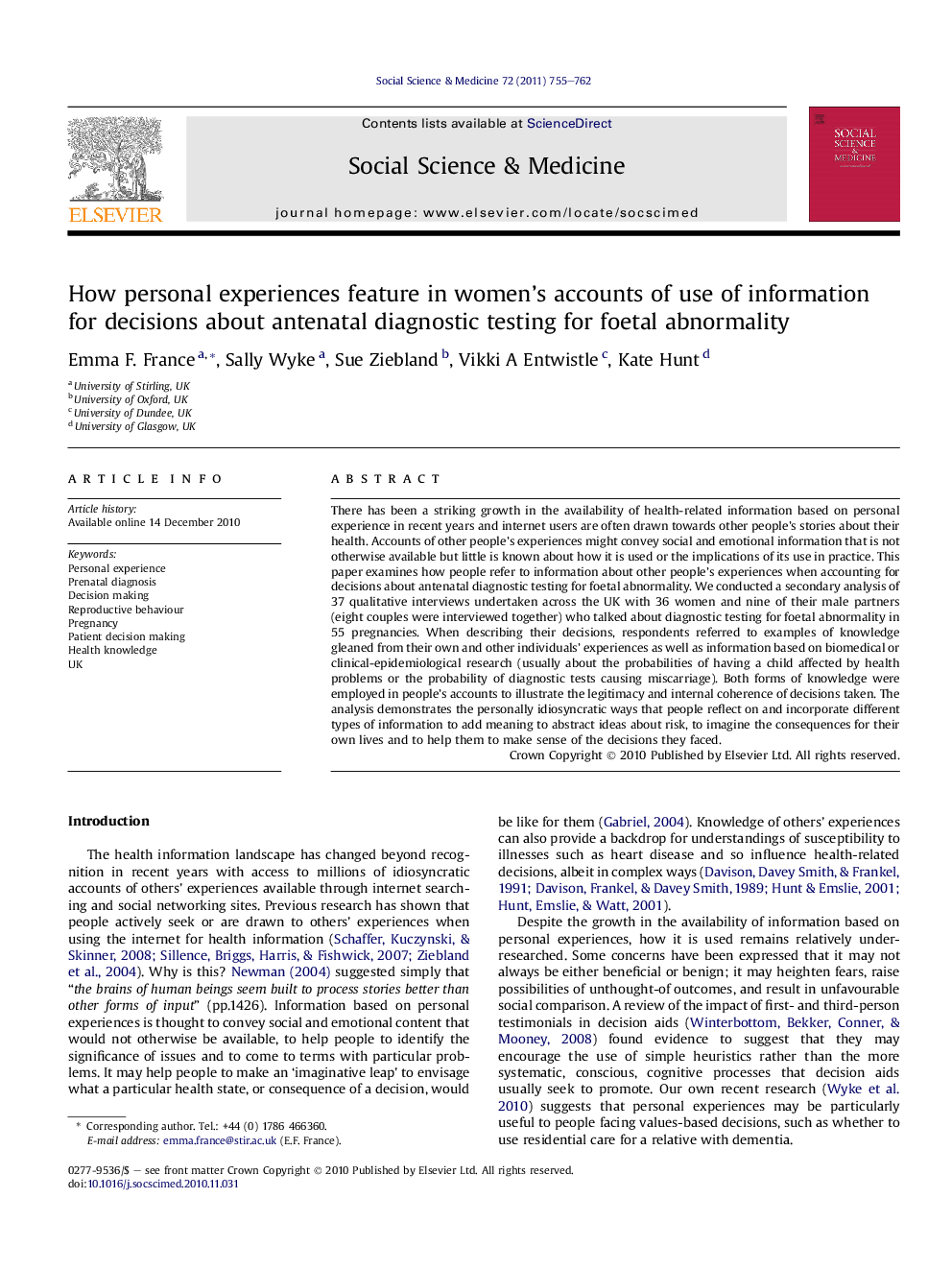| Article ID | Journal | Published Year | Pages | File Type |
|---|---|---|---|---|
| 952992 | Social Science & Medicine | 2011 | 8 Pages |
There has been a striking growth in the availability of health-related information based on personal experience in recent years and internet users are often drawn towards other people’s stories about their health. Accounts of other people’s experiences might convey social and emotional information that is not otherwise available but little is known about how it is used or the implications of its use in practice. This paper examines how people refer to information about other people’s experiences when accounting for decisions about antenatal diagnostic testing for foetal abnormality. We conducted a secondary analysis of 37 qualitative interviews undertaken across the UK with 36 women and nine of their male partners (eight couples were interviewed together) who talked about diagnostic testing for foetal abnormality in 55 pregnancies. When describing their decisions, respondents referred to examples of knowledge gleaned from their own and other individuals’ experiences as well as information based on biomedical or clinical-epidemiological research (usually about the probabilities of having a child affected by health problems or the probability of diagnostic tests causing miscarriage). Both forms of knowledge were employed in people’s accounts to illustrate the legitimacy and internal coherence of decisions taken. The analysis demonstrates the personally idiosyncratic ways that people reflect on and incorporate different types of information to add meaning to abstract ideas about risk, to imagine the consequences for their own lives and to help them to make sense of the decisions they faced.
Research highlights► Parents presented their antenatal testing decisions as rational and reasonable. ► They reported weighing up values and information from various sources. ► They drew on both probability statistics and information on personal experiences. ► Parents integrated different types of information in idiosyncratic ways. ► This makes it difficult to predict patterns of information use.
